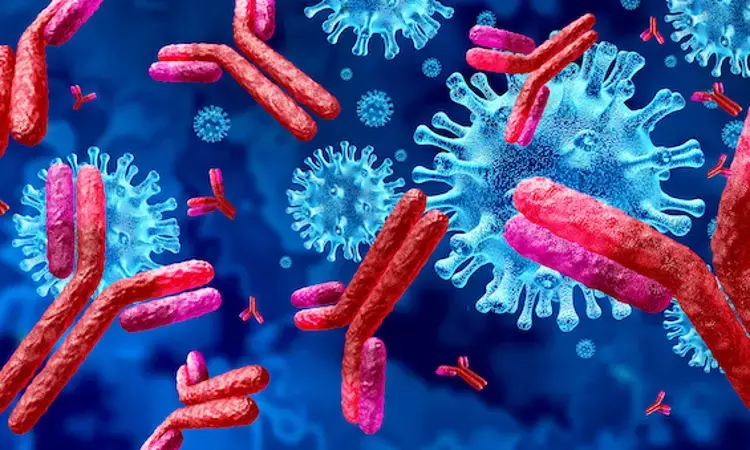- Home
- Medical news & Guidelines
- Anesthesiology
- Cardiology and CTVS
- Critical Care
- Dentistry
- Dermatology
- Diabetes and Endocrinology
- ENT
- Gastroenterology
- Medicine
- Nephrology
- Neurology
- Obstretics-Gynaecology
- Oncology
- Ophthalmology
- Orthopaedics
- Pediatrics-Neonatology
- Psychiatry
- Pulmonology
- Radiology
- Surgery
- Urology
- Laboratory Medicine
- Diet
- Nursing
- Paramedical
- Physiotherapy
- Health news
- Fact Check
- Bone Health Fact Check
- Brain Health Fact Check
- Cancer Related Fact Check
- Child Care Fact Check
- Dental and oral health fact check
- Diabetes and metabolic health fact check
- Diet and Nutrition Fact Check
- Eye and ENT Care Fact Check
- Fitness fact check
- Gut health fact check
- Heart health fact check
- Kidney health fact check
- Medical education fact check
- Men's health fact check
- Respiratory fact check
- Skin and hair care fact check
- Vaccine and Immunization fact check
- Women's health fact check
- AYUSH
- State News
- Andaman and Nicobar Islands
- Andhra Pradesh
- Arunachal Pradesh
- Assam
- Bihar
- Chandigarh
- Chattisgarh
- Dadra and Nagar Haveli
- Daman and Diu
- Delhi
- Goa
- Gujarat
- Haryana
- Himachal Pradesh
- Jammu & Kashmir
- Jharkhand
- Karnataka
- Kerala
- Ladakh
- Lakshadweep
- Madhya Pradesh
- Maharashtra
- Manipur
- Meghalaya
- Mizoram
- Nagaland
- Odisha
- Puducherry
- Punjab
- Rajasthan
- Sikkim
- Tamil Nadu
- Telangana
- Tripura
- Uttar Pradesh
- Uttrakhand
- West Bengal
- Medical Education
- Industry
Successful treatment of humeral shaft nonunion with romosozumab: A case report

Japan: Romosozumab is a humanized monoclonal anti-sclerostin antibody (Scl-Ab) that binds and inhibits sclerostin, thereby increasing bone formation and decreasing bone resorption. In 2019, the Japanese Ministry of Health, Labor and Welfare, and the FDA approved romosozumab for treating osteoporosis in men and in postmenopausal women at high risk of fracture. Humeral shaft fractures account for 1%–3% of all fractures. The non-union rate for these ranges from 0.5% to 13%.
S.Y. Lee et al. present a case of a patient with non-union of a humeral shaft fracture who was successfully treated with monthly administration of romosozumab.
Case presentation: A 67-year-old woman experienced a fracture on the right humerus shaft (AO/OTA classification: 12A1) from a fall in May 2018. The patient originally underwent conservative treatment with immobilization in a hanging cast for 3 weeks and subsequent functional bracing. Radiography at 3 months after injury showed delayed union of the fracture; therefore, treatment with low-intensity pulsed ultrasound (LIPUS) to the fracture site was initiated using Sonic Accelerated Fracture Healing System. A functional brace was removed at the end of 2018.
In March 2019, after 10 months of the injury, the patient was referred to their hospital because of non-union of the fracture. The patient indicated moderate pain at the non-union site worsened by stress. Computed tomography (CT) revealed non-union of the proximal third of the humerus shaft with a definite bony gap and sclerotic edges and varus angle deformity. On physical examination, the patient's active range of motion of the shoulder was not limited. For the past 7 months, the patient had received monthly minodronate as treatment for osteoporosis and had no other known metabolic diseases. She was a non-smoker and did not consume alcohol. Serum 25-hydroxyvitamin D (25(OH)D) was 26.2 ng/ml. A dual energy X-ray absorptiometry (DXA) scan showed severe osteoporosis with low bone mineral density (BMD) in the lumbar spine (T-score of − 3.5) and low BMD in the femoral neck (Tscore of − 2.5). The patient declined an osteosynthesis operation, and consented to therapy with romosozumab at the approved dose for osteoporosis (210 mg/month), in an attempt to treat her osteoporosis as well as the oligotrophic non-union. They discontinued the minodronate and subcutaneously administrated the romosozumab once per month beginning in April 2019. They continued LIPUS treatment, which was performed for 20 min once daily.
Three months after the initiation of the romosozumab treatment, radiography showed a reduction of the bone gap. After 6 months of treatment, coinciding with the disappearance of pain, radiography and CT scan showed bridging of the callus, demonstrating that the non-union was united. After 12 months of treatment, they discontinued the romosozumab and restarted the minodronate. A DXA scan showed that T-scores in the lumbar spine and in the femoral neck were − 2.6 and − 3.2, respectively. At the patient's final visit (18 months after the initiation of romosozumab), radiography showed complete healing and consolidation. Throughout the follow-up period, the patient reported no side effects.
Further reading:
Successful treatment of humeral shaft nonunion with romosozumab: A case report
Sang Yang Lee, Keikichi Kawasaki, Katsunori Inagaki.
Trauma Case Reports 37 (2022) 100595
https://doi.org/10.1016/j.tcr.2021.100595
MBBS, Dip. Ortho, DNB ortho, MNAMS
Dr Supreeth D R (MBBS, Dip. Ortho, DNB ortho, MNAMS) is a practicing orthopedician with interest in medical research and publishing articles. He completed MBBS from mysore medical college, dip ortho from Trivandrum medical college and sec. DNB from Manipal Hospital, Bengaluru. He has expirence of 7years in the field of orthopedics. He has presented scientific papers & posters in various state, national and international conferences. His interest in writing articles lead the way to join medical dialogues. He can be contacted at editorial@medicaldialogues.in.
Dr Kamal Kant Kohli-MBBS, DTCD- a chest specialist with more than 30 years of practice and a flair for writing clinical articles, Dr Kamal Kant Kohli joined Medical Dialogues as a Chief Editor of Medical News. Besides writing articles, as an editor, he proofreads and verifies all the medical content published on Medical Dialogues including those coming from journals, studies,medical conferences,guidelines etc. Email: drkohli@medicaldialogues.in. Contact no. 011-43720751


